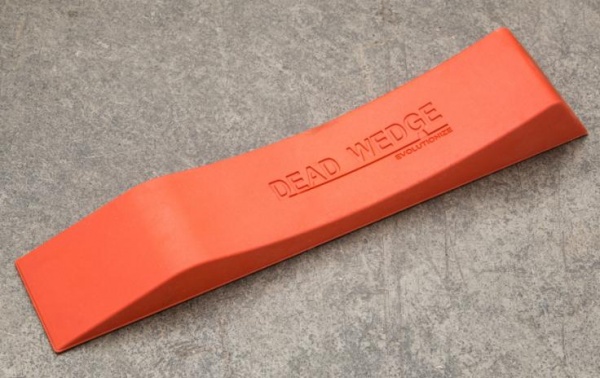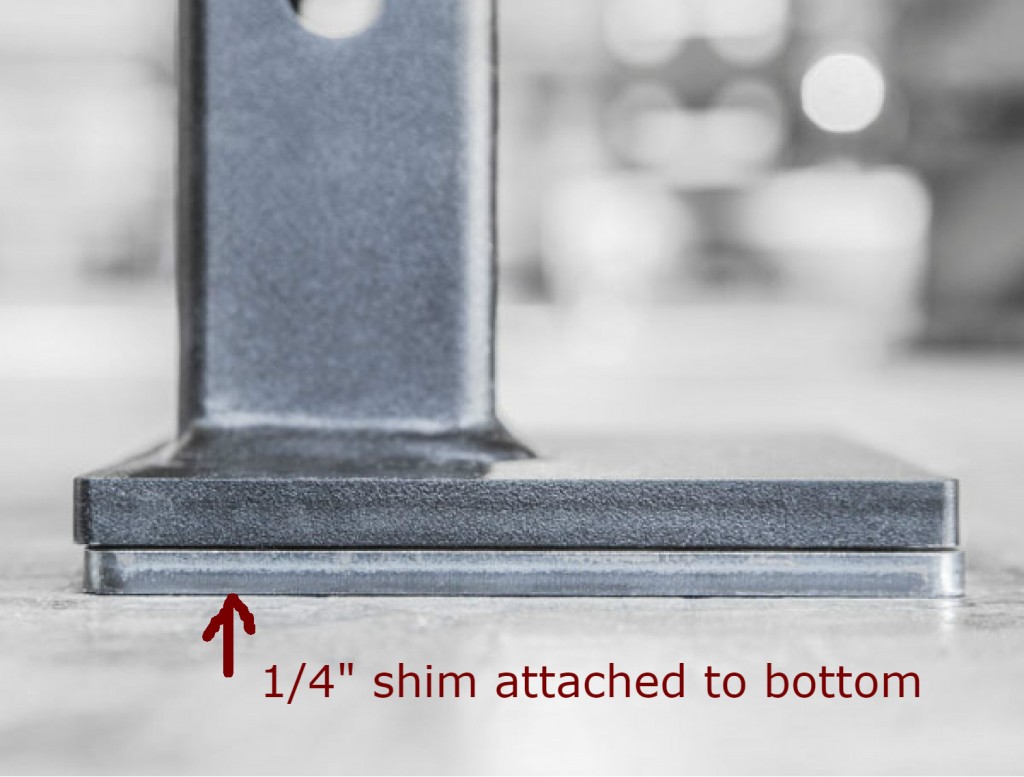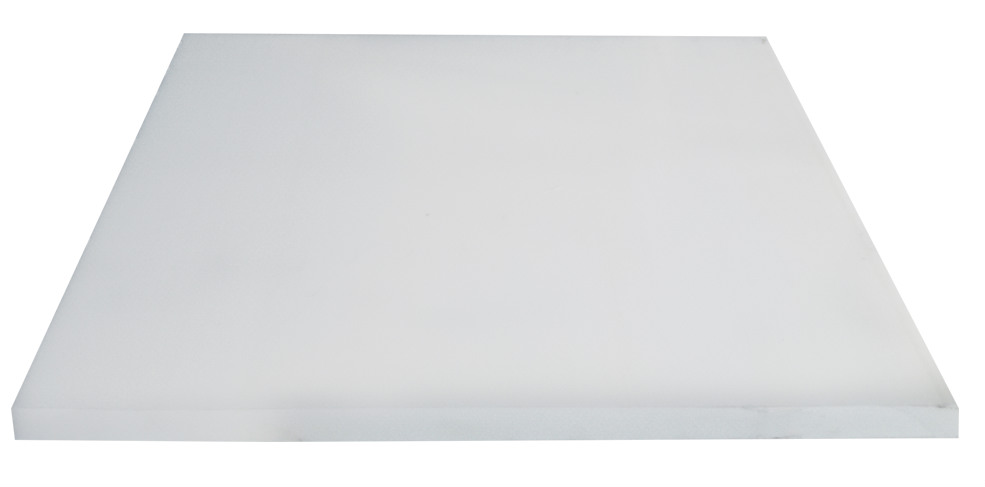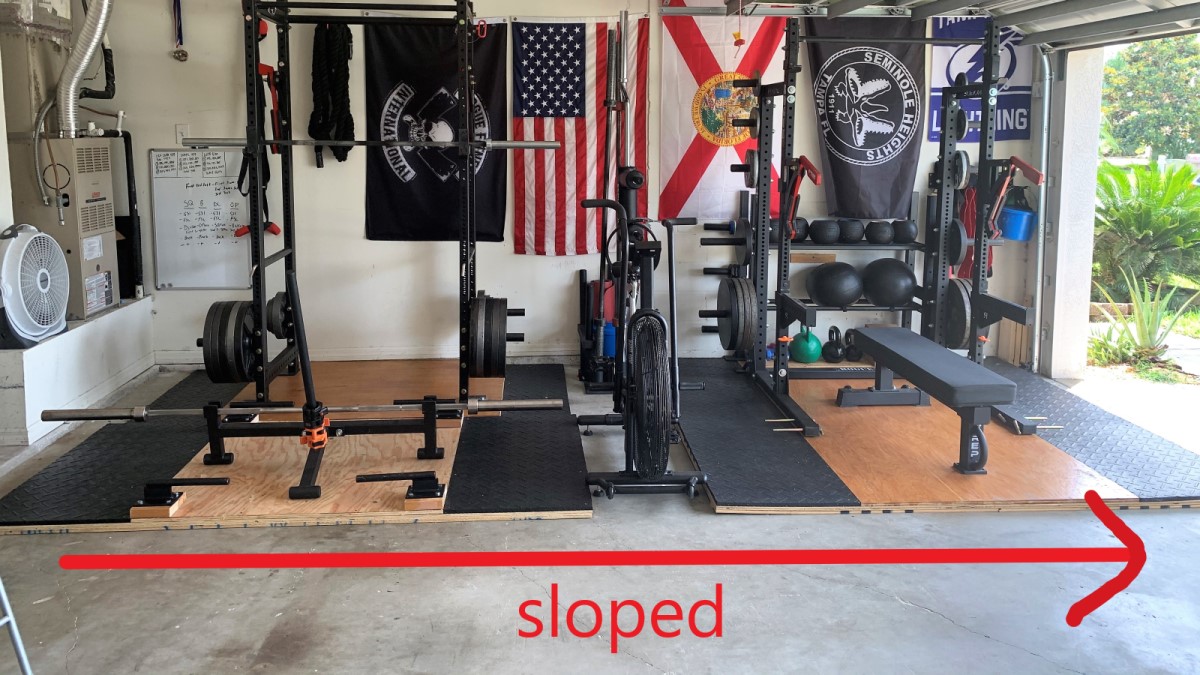Your garage looks absolutely perfect for a gym. Concrete floor, oodles of empty space… And a floor that turns out to not be level. Doh!
This is no accident. Due to building codes, a garage has a minimum slope towards the opening of 1/8″ per foot to cause flammable liquids like gasoline or oil to drain out. Builders might even make it 1/4″ per foot to be safe. This represents 1 or 2 degrees of slope, just enough to mess you up.
For a gym, what you end up with is a floor that looks level until your barbell rolls out of your garage when you load it up for deadlifts.
Here are some tips to handle it effectively.
Table of Contents
Stopping Deadlifts / Cleans From Rolling
The below thread on reddit features a jerry-rigged type of solution to stop your barbell from rolling on a non-level surface. Put a piece of cardboard under one of your rubber mats to create a bit of a bulge to stop the roll.
That solution assumes that the only thing you’re doing in that area of your gym is deadlifts. For your next exercise you’ve got this stupid bulge in the floor.
I prefer a more elegant or cleaner solution. I’ve already written about the Dead Wedge being a nice tool for easily loading multiple plates on your bar for deadlifts. It also happens to be good stopper. You should already have one for its intended purpose. Get two instead (Rogue sells them), set them on the floor, and they’ll stop both sides of the barbell from rolling away between sets.

Another object you already have might work. The Dead Wedge just happens to be a nice shape and material for this. It won’t slide and is lightweight and small.
Making a Platform Level
If you have a lifting platform, your options expand a bit.
Bill Coyne has a pretty simple, inexpensive solution for leveling your platform on a sloped floor.
It involves several pieces of thin plywood that you cut and stagger down to create a wedge that goes under your platform. This compensates for a 2″ drop over your 8ft platform, or adjust to how ever much you need.
The below guide from knoechel on imgur also illustrates this same concept.
I’ve seen another design where someone used 2×6 boards trimmed down to several heights to act as wedges in a similar way. The plywood solution is much better. It disperses the load well across the whole area under the platform.
Your Power Rack
You can use the above solution for creating a wedge for a platform that holds your rack to make it level.
Without doing that, which direction should you face your rack?
The most natural spot would be against the back wall. But with the slope your toes will be higher than your heels and prevent you from squatting quite as low. Realistically we’re talking a 1-2 degree slope and you might not even notice. Still, it could get in your head.
Doing that and facing backwards in the rack while you squat, ie: facing towards the garage door, is another option if you have a full power rack. With a squat rack / half rack you’ll have to turn it around and possibly have to give extra space behind it for bench presses.
Putting the rack against a side wall isn’t recommended without leveling it. One side of your body will be lower than the other. Worse, you’ll do your set with the bar balanced level and one side of the bar will always hit the non-level J cups first when you re-rack.

To level your rack you can put shims on the downslope side. Rogue sells sets of 7″x5″ steel shims in 1/4″ or 5/64″ thickness that are compatible with the Infinity, Monster, or Monster Lite racks and rigs and are meant to be put in place as you bolt down your rack feet. They’re just a set of steel plates with channels in them to allow for the screws going through.

The easiest DIY thing might be UHMW plastic shims that you can cut and drill. UHMW is tough material used on power rack J-cups and can be cut with a power saw only. UHMW sheets can be found at these search links on Amazon.
For a rack with feet placed 4ft apart, on each lower sloped foot you would need 1/2″ worth of shims on a 1 degree slope, or 1″ of shims on a 2 degree slope. Find a way to measure your floor’s slope first with an angle or level tool to see exactly how much shimming you need.
Shimming works best with the rack faced up or down the slope. With it sideways you can get it level, but your own left or right foot will be lower. You might find that part to be not a big deal. You will naturally hold the barbell level with gravity, so if at least your rack is level then you’ll be rid of most of the balance issue with unracking the bar, and you’ll re-rack the bar evenly. You might end up with slightly unbalanced muscle development, but you might not notice such a thing at all.
Final Thoughts
With some exercises the slope doesn’t matter much. Your body is meant to traverse rough ground all over the Earth and lift objects on various types of uneven ground and deal with asymmetric forces.
Any other good ways you’ve found to deal with a sloped floor?

